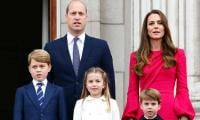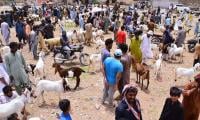Indian Prime Minister Narendra Modi’s visit to Washington only reinforces the deeper bilateral relationship between the world’s two largest democracies and economies, with the US standing number one with an $18 trillion economy and India standing at number six with a $2.1 trillion economy.
In the post-liberalisation period, the two countries have seen a widening trade, investment and business relationship. Ahead of Modi’s visit to Washington, a cursory view of the American press made it obvious that their relationship hardly faces any serious differences. Both are on same page when it comes to a policy on Afghanistan. And, despite Pakistan’s well-documented concerns over India’s presence in Afghanistan, Washington does not seem to be in disagreement with India.
Morality does not guide foreign policy preferences. Gone are the cold-war considerations of alignment when India was seen as a pro-Moscow state (but not dependent the way Pakistan was on Western alliance systems). India, with its strong and growing economy, has managed an independent foreign policy and received benefits and access to technology and weapons from cold-war rivals.
India’s educated, skilled and IT professionals contributed four percent to its GDP, sending $68 billion in remittances, $8 billion alone from the United States (2015 data update). Twelve percent of the world’s remittances land in India.
The Indo-US relationship is not just of a political nature. India’s 300 million middle class offers a huge market for American private investors. In 2015 alone, American companies invested $28 billion in India. Last year in June members of the US-India Business Council, on a visit to New Delhi, informed PM Modi that $45 billion investment was in the pipeline for India. India enjoys $24 billion surplus in bilateral trade with the US; last year bilateral trade figures stood at $66 billion. A New York Times story recently revealed that Trump’s company has three real-estate properties in three Indian cities. Trump started investing in India’s real estate in 2007.
Representatives from many Ivy League institutions started making trips to India a decade ago. Some of them have set up offices in India, partly aimed at attracting a large number of students. Official data shows Indians are the second largest foreign student group in the US, second to the Chinese, nearing 200,000 students. The number of Pakistani students averages 4,000 to 6,000.
There are four million Indian-Americans, which makes them one percent of the US population. Many of them occupy influential positions of power not only in private but in public sector as well. Noteworthy is Nikki Haley, the current US envoy to the UN. USAID’s head Dr Rajiv Shah also had roots in India.
In the political and security context, both India and the US share concerns about the rise of China and militant extremism originating from the Pak-Afghan border. Most recently, both countries stayed away from Chinese-led One-Belt-One Road (OBOR) conference in Beijing, of which CPEC is the cornerstone. India does not hide its opposition to CPEC, whereas the US apparently supports it, hoping it will be a stabilising factor in Pakistan. US diplomats in Pakistan are on record offering expertise to manifold projects under CPEC.
For years, we in Pakistan have compared our relationship with the US in comparison with India. That has not helped because the Indo-US relationship is not confined to security cooperation; it is multi-faceted and much deeper than many realise in Pakistan. Thus the American deals with India will hurt Pakistan but that is hardly of any consequence.
Since Trump took power, does Pakistan feel abandoned again? Uncertainty and anxiety definitely exists. The last US president to visit Pakistan was Bill Clinton. Should we blame India for the treatment we receive from the US? No. That does not help us in any way other than for domestic consumption, fuelling anti-India sentiments among the emotional local population and giving ground to right-wing politics. President Obama did not come to Pakistan in his eight-year rule, even though we were hoping for a brief stopover. And Donald Trump too won’t come; in fact if Secretary of State Rick Tillerson comes to visit Pakistan that would be a success.
With additional troops approved for Afghanistan, Pakistan has to deal with Pentagon and then with the US State Department. Our relationship has remained either transactional or security centric. The billions of dollars that the US poured into Pakistan fail to create a strong base for a long-term relationship. Five months in office, Trump still has not completed a Pakistan policy review. More than 5,000 US troops in Afghanistan means more pressure on Pakistan to act on our side of the border.
Some US Congress members are now working towards undoing the non-Nato ally status for Pakistan, though it won’t have any practical implications on Pakistan as the status itself was given without us asking for it. And it did not change the nature of the relationship as such. However, it does reflect on the negativity and frustration for Pakistan among the US law-makers. The Trump administration, with its budget cuts plans, means no new funding for Pakistan once the Kerry-Lugar Berman civilian assistance ends.
We would still need US support in getting IMF loans in case our trade deficit continues to widen and eventually impacts our balance of payment and reserves. Despite the lower oil prices in the international market, our trade deficit did not go down. It is uncertain how long the apparent economic stability gains, made during this Nawaz Sharif government, will last. Gen Musharraf and Shaukat Aziz had also claimed to have broken the borrowing bowl, but we ended up borrowing more from the IMF than ever before in our history prior to 2008. Our dependency refused to go away.
The reason the Indo-US relationship enjoys a bright future is very simple: India does not depend on US economic aid, or support for IMF lending. Nor is it marred in a trust-deficit relationship, caused by military conflict in the region. India’s profile and image is entirely different from ours. India does not face the ‘do more’ dilemma. The choices for us have been challenging but very clear: uprooting violent extremism, cleansing the country of non-state actors which threaten our own existence and inflict stress in the region. It will take years to change our global image and be seen as a peaceful, tolerant, economically stable and progressive country. We have terrorist networks and a 50-million strong illiterate population. There is also a changing regional political scenario and, with new alignments with Saudi Arabia, our future is at stake.
We must understand that the perception about us in Washington, in the region and within the country is not because we are a Muslim-majority country but because of the political choices we have made and alliance we have chosen. Undemocratic regimes made unwise decisions.
The political power of any country does not last long without a sound economic base. A fragile economy may not be able to support defence needs. Only an educated, democratic and economically stable Pakistan can address and face economic and security challenges. And we can do that without the blessings of any big power of the contemporary era if the ruling elites and the deep state make the right choices.
Email: mush.rajpar@gmail.com
Twitter: @MushRajpar
People stand in line up as election officials check their ballot papers during voting general election at a polling...
Women show their voter identity cards as they stand in a queue before casting their votes in Agartala. — PTIThe 18th...
Former prime minister Imran Khan. — Instagram/ imrankhan.ptiAn old saying has it that “when you dance with the...
Kashmiris in Indian illegally occupied Kashmir protesting against the Indian occupation as the forces of India looked...
A representational image showing residents walking at a wholesale market in Karachi. — AFP/FileOnce again there is...
A representational image showing late Pakistani human rights activist and Supreme Court lawyer Asma Jahangir. —...







